► Peugeot’s new 408 crossover driven
► Plug-in hybrid 225 version tested
► Brilliant or bizarre? We decide
The new Peugeot 408 is intended to be the brand’s most desirable car yet – from a styling, positioning and branding perspective, rather than boring considerations such as practicality or value. It’s a new nameplate, worn by a crossover SUV that splits the difference between the Renault Arkana and the BMW X4. High-riding and clad like an SUV, but with a four-door coupe body.
UK models arrived in early 2023 with three engine options: a petrol and two plug-in hybrids. A pure-electric e-408 will arrive in 2024. All notable, but with this Peugeot lion we really need to talk about the elephant in the room – that eye-popping design.
Read on for our detailed 2023 Peugeot 408 review.
Like it or loathe it, you can’t miss the Peugeot 408…
Peugeot has reinvented its entire range since launching the 3008 SUV in 2016. The 408 is the ultimate expression of that new wave: click here for its design story.
There’s something to fixate from every angle: the expansive, shimmering grille on GT models, the beady-eyed lamps, body panels with more lines than three decades of The Simpsons opening credits and that massive black plastic rear bumper.
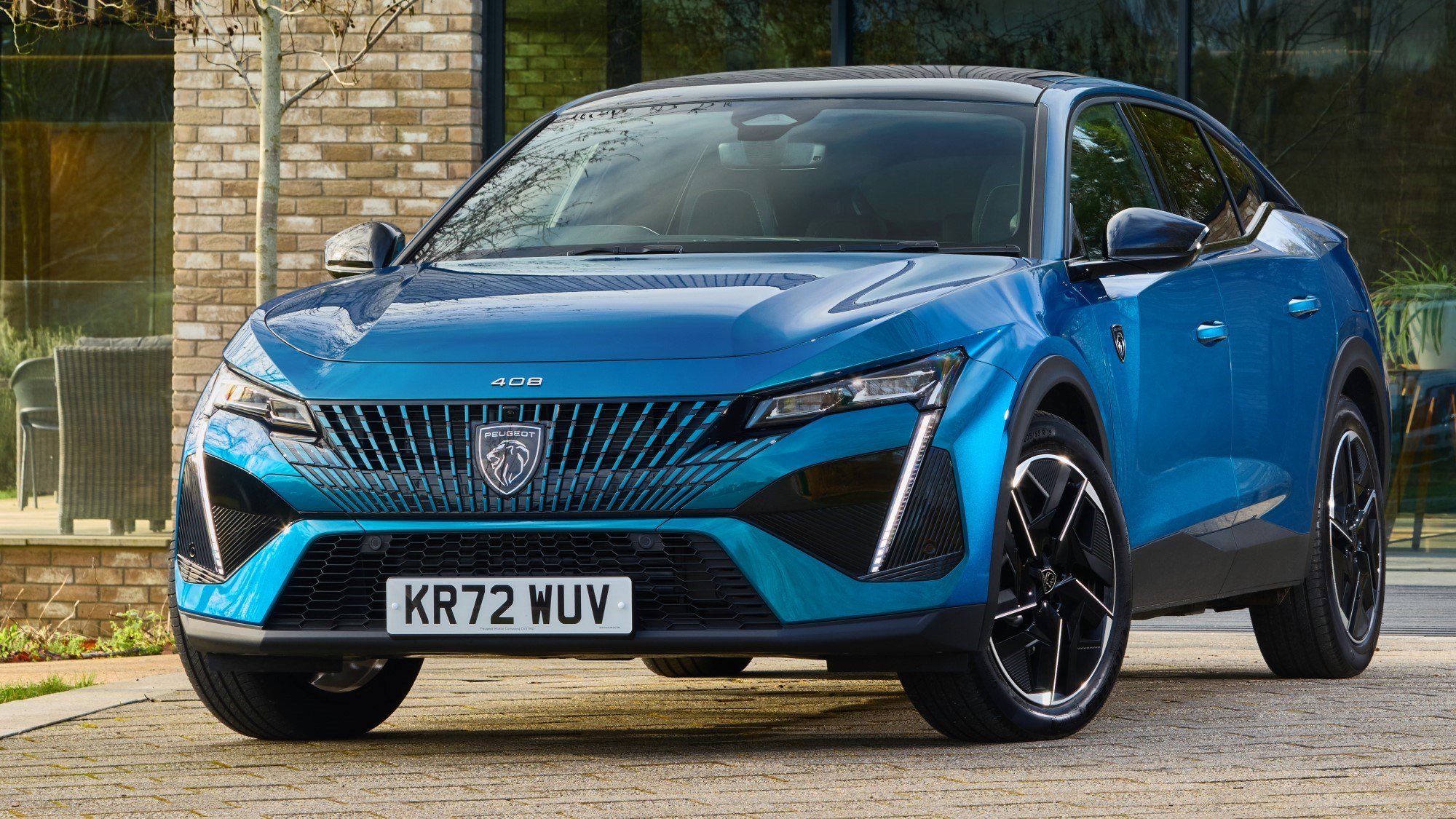
Extrovert? Attention-seeking? Aggressive? All of the above. But car buyers are notoriously nonchalant about big Peugeots (only the 508s are bigger than the 4.69m 408), so going for broke is absolutely the right strategy to draw in new fans and get noticed.
For our money, it looks best in Elixir Red, the launch colour is this Obsession Blue, and the darker hues tone down the glaring contrast between the paint and that rear plastic carbuncle. The excellently angular wheels are an optional extra for top-spec GT cars, as is a blue leather interior.
Peugeot 408 spec and economy details
We’ll start with the flagship Hybrid 225 engine, which shoves up to 177bhp from a four-cylinder engine and 109bhp from an electric motor through the eight-speed automatic transmission to spin the front wheels.
Unsurprisingly, given its use across Peugeot, Vauxhall, Citroën and DS, this plug-in hybrid drivetrain with its combined output of 222bhp has evolved into a sophisticated experience. It’s the most mature here that we’ve ever experienced, lacking much of the hesitancy of its previous applications in cars like the DS 9, for example. The dinky 1.6-litre petrol is far less vocal, too – a welcome break, as it can sound very strained.
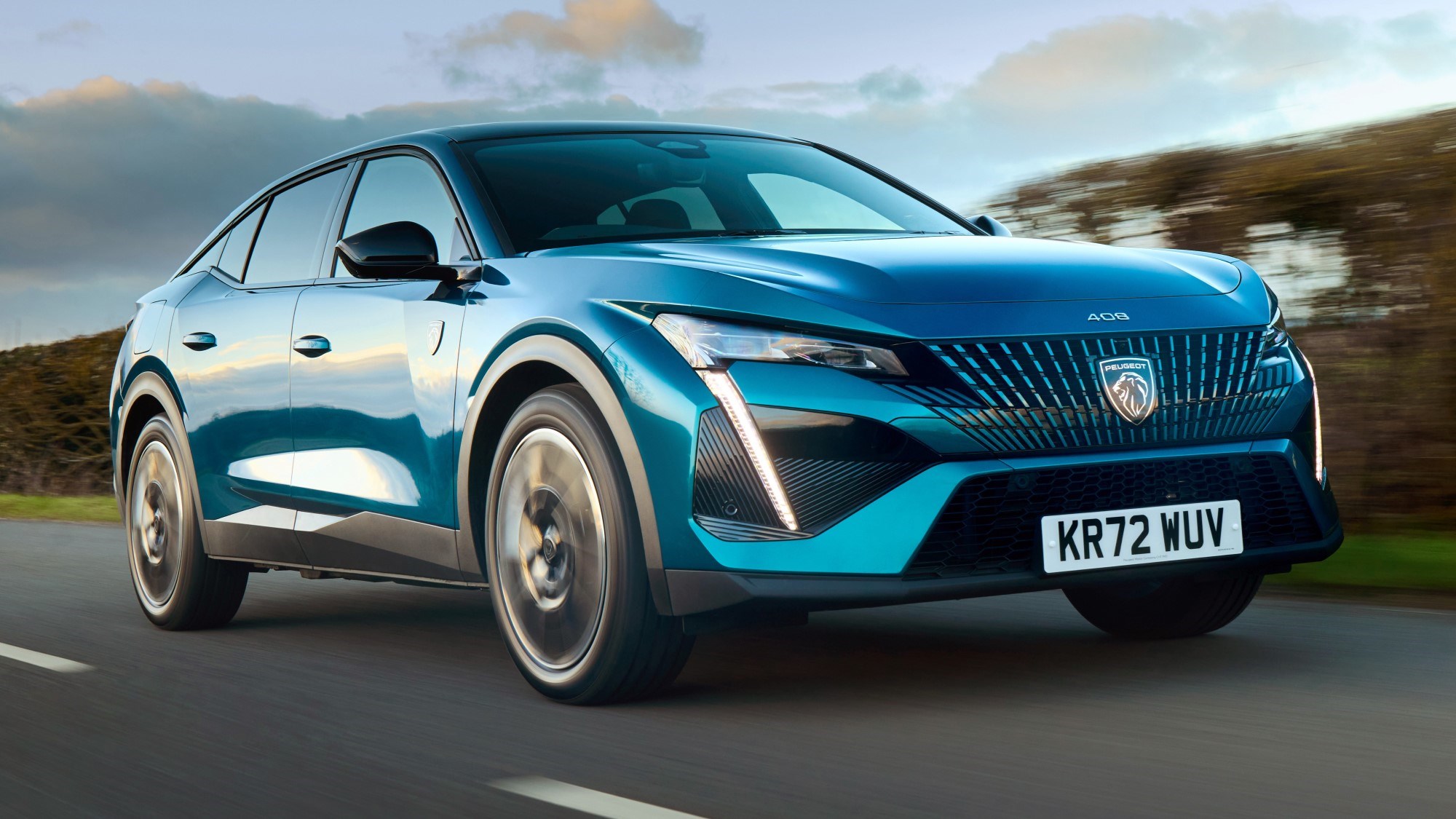
The 408 can accelerate strongly in Electric mode, blend petrol and electric power smoothly and quietly, and continuously vary the power mix to ration electric assistance on long journeys. There’s an e-save function to store up volts for inner cities too.
Our drive covered 117 miles, a no-hanging-about mix of mountainous climbs and descents plus some draining highway, with a rough consumption of 36mpg. Regularly charge the battery for urban trips or commute beneath the circa 40-mile electric threshold, and you’ll post a significantly lower emissions and higher economy.
How’s the 408 hybrid’s handling and ride?
The 408 is pretty good to drive. The steering feels nice, responsive thanks to Peugeot’s trademark fast-rack directness and with well-judged weighting that increases with speed.
But the set-up feels a little eager given the softness of the Peugeot’s MacPherson strut front and twist beam rear suspension. There’s quite a lot of body movement, with lean in corners, some pitching under braking and flopping into compressions. You feel it most as a passenger, and more lateral seat support wouldn’t go amiss.
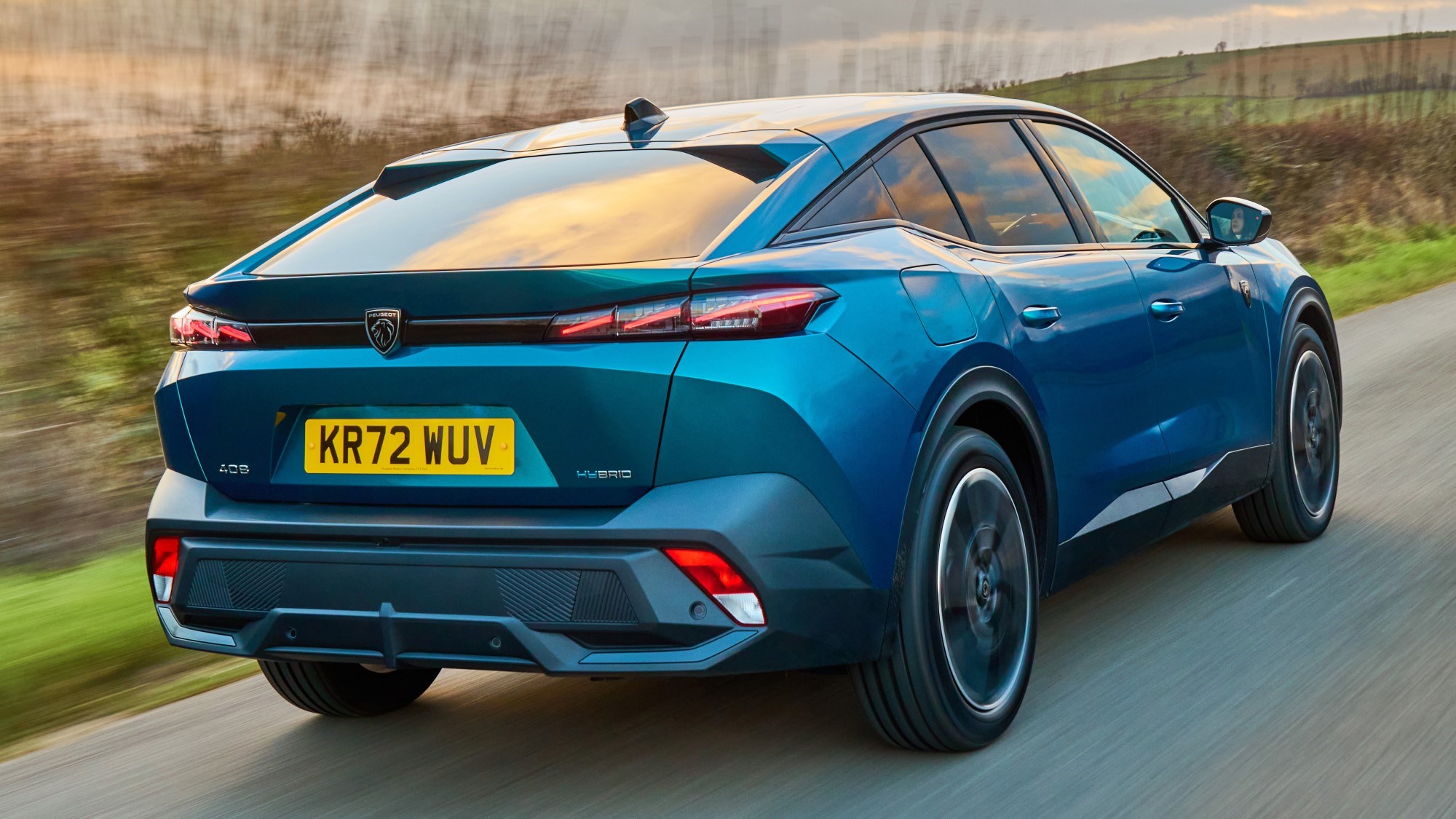
The flagship hybrid weighs 1706kg, around 300kg more than the three-pot petrol, but the suspension’s clearly been set up with the former in mind. The petrol feels stiffer, and like it’s on its toes the whole time – not a setup that suits the car’s character.
To reduce its impact, brake and accelerate steadily and wind off lock gently, then you’ll work in harmony with the suspension, acting like a rugby player to safely land – not tip – a jumping opponent.
Oh dear: so it’s an unpleasant blancmange?
The upside is a sweetly riding car, comfortable like the great ‘90s Peugeots. While Barcelona’s smooth tarmac isn’t much of a test, the refined suspension never crashes or judders, though UK roads will provide a sterner examination of whether the dampers provide too little control.
Another trait shared with those pastmaster Peugeots is decent ability to pour along sweeping S-bends. The front wheels grip strongly in corners, the 20inch Goodyears deftly defying understeer.
And when you get on the brakes, pedal response is crisp and firm, not always a Peugeot given – especially in its hybrids, which often have brake pedals that feel like stepping on a sponge. You can amplify the regenerative hybrid braking by pressing the drive selector’s B Button, which proves a halfway house between the natural deceleration of engine braking and jabbing at the pads.
How’s the interior?
Peugeot watchers will recognise the dashboard and centre console design: it was actually created for the 408 (which explains those geometric shapes in keeping with the edgy exterior) though debuted on the 308 models.
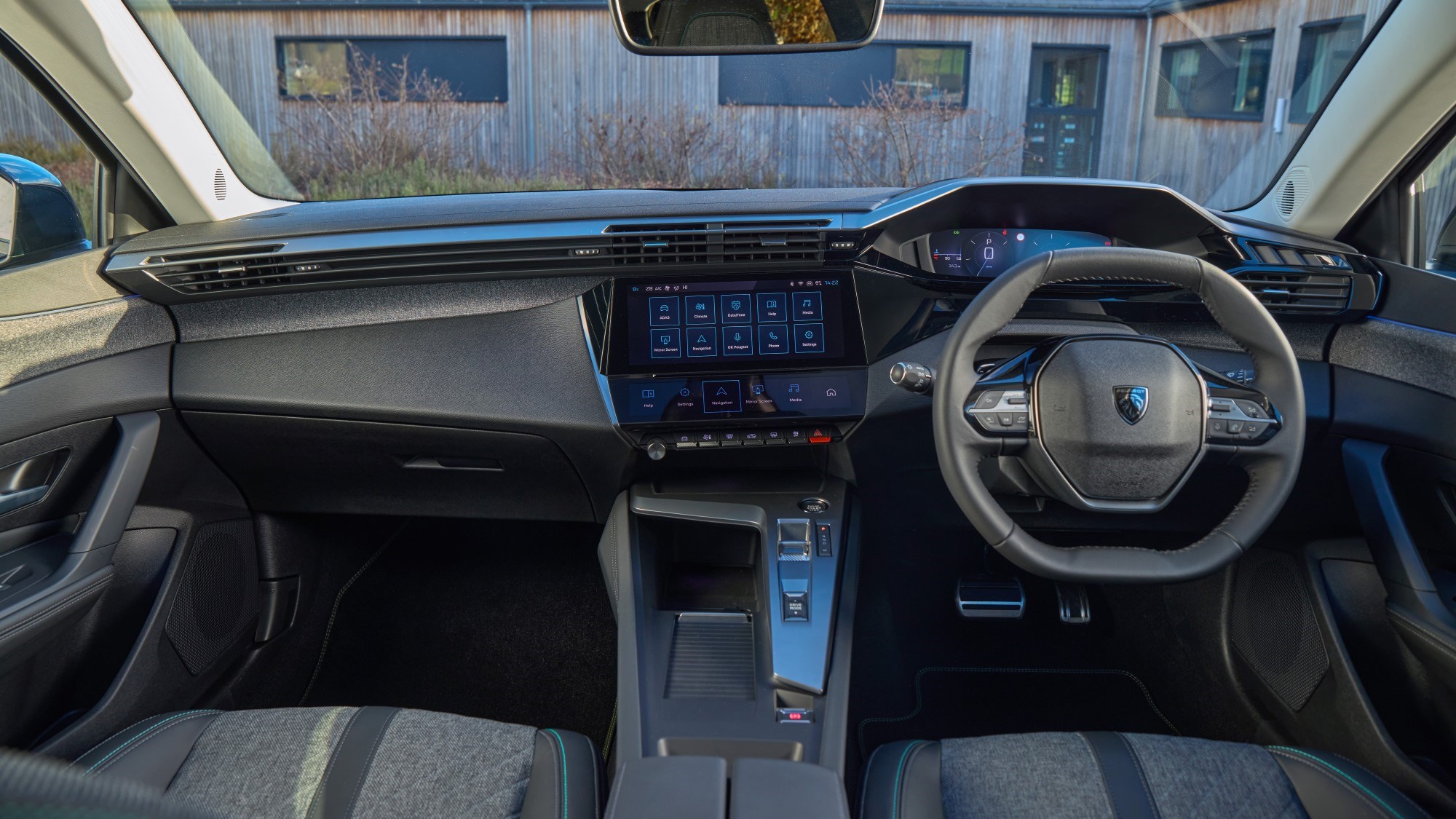
The driver’s seat position climbs from sportily low to reasonably lofty: don’t expect anything too commanding though. Two six-footers can sit comfortably in tandem, with decent rear knee room and a couple of inches of headspace. Acoustic glass is standard on mid-range cars, and the 408 is pretty quiet on the autoroute, with a near-silent powertrain and a hum of tyre noise.
Open the hybrid’s rear hatch to reveal a shallow boot floor though with decently sized rectangular bay ahead of the rear seats. Accommodating hybrid batteries reduces the petrol’s cargo volume from 536 to 471 litres. This isn’t a huge deal, though – the added mass under the boot floor actually eliminates both the load lip and the hump left by the folded back seats, and there’s still room under there to store your charging cables.
Talk me through the range and prices
The UK line-up starts with the £31,050 Allure petrol; standard kit includes a handsome and responsive central touchscreen, reversing camera with wash function, 17in alloys, navigation and advanced emergency braking. You’ll pay £38,400 for the Hybrid 180 (same 81kW e-motor, but less petrol punch).
The Hybrid 225 becomes available at Allure Premium trim, for £40,725. Spec upgrades include adaptive cruise control and long-range blindspot monitoring, keyless entry and 19in rims.
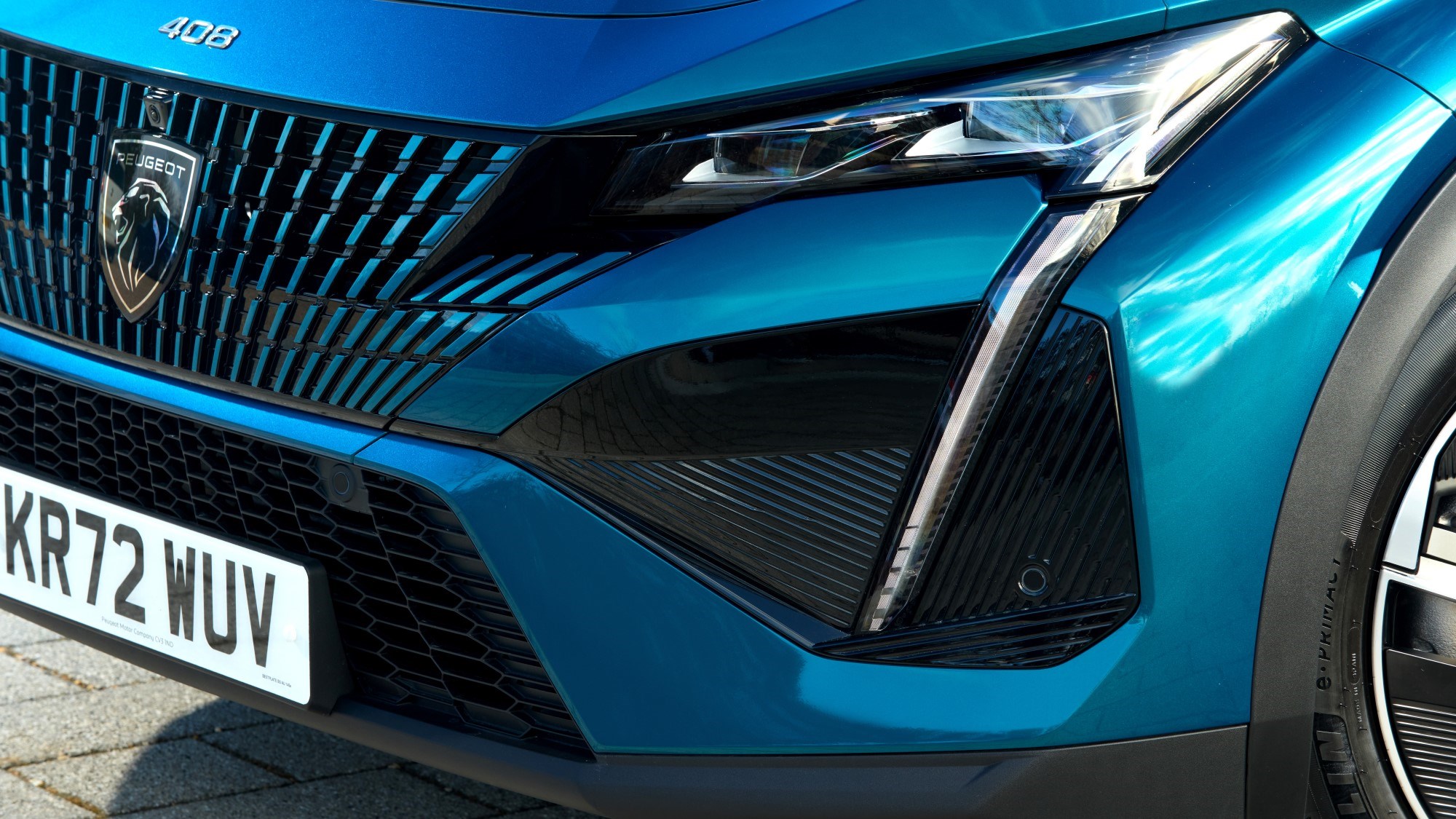
We drove the flagship GT, with its matrix LED headlamps and fancy claw tail-light ‘welcome’ dance, lane position assist, heated steering wheel, imitation leather and Alcantara upholstery with green stitching and ambient cabin lighting. You’ll pay £34,365 for the ICE car, £41,800 for the Hybrid 180 and £43,200 for the flagship 225 GT.
The few options include £1300 night vision (a segment first), £900 sunroof and £300 for our test car’s 20in Monolithe alloys, with that eye-catching square effect. Oddly, only a 3.7kW on-board charger is standard: if you want to halve the charging time to 100 minutes to make the most of the typical 7.4kW AC wallbox, then it’s a £400 upgrade.
Verdict
Peugeot’s new marketing mantra is all about the Allure of the brand. And the fundamental question is about the 408’s design: do you feel allure or allergic?
If it’s the former, and you relish a comfortable ride, then this novel choice could prove a sophisticated way to travel – and get you well and truly noticed in the company car park.